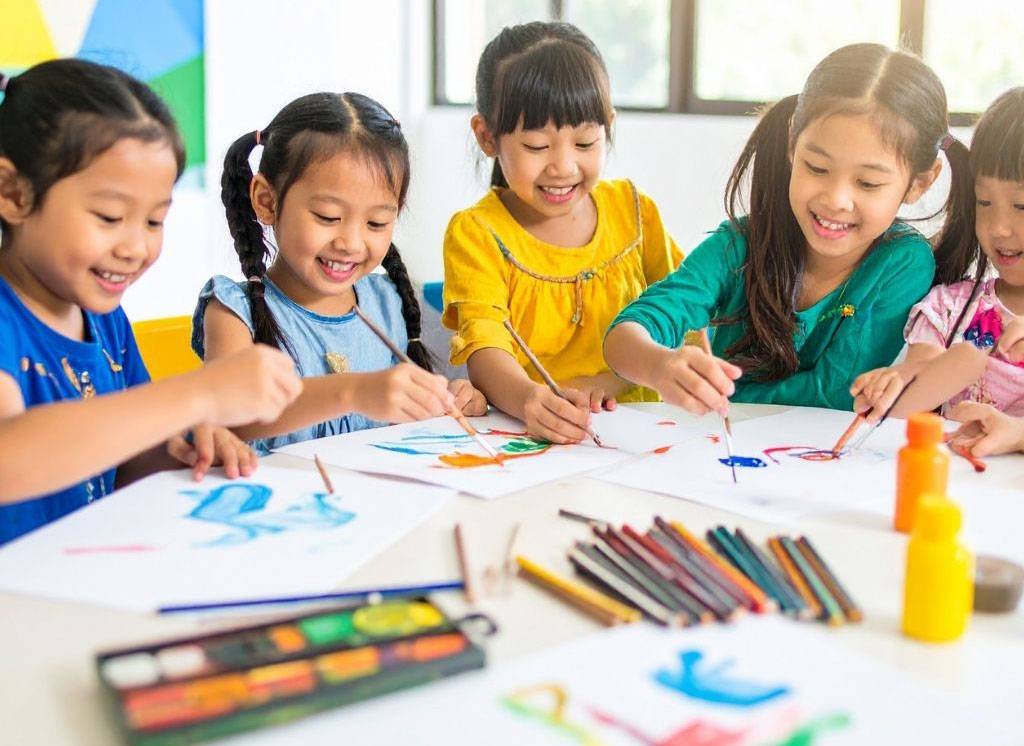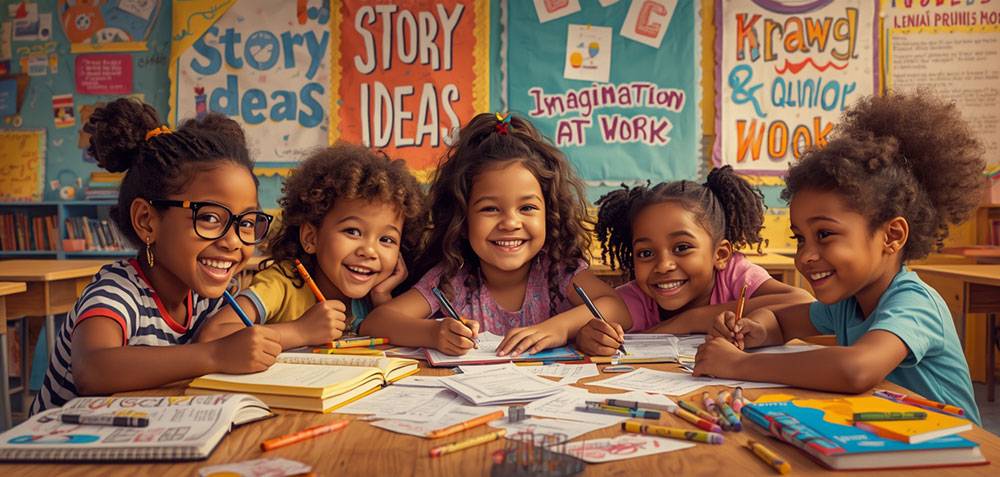Unlock Your Child’s Imagination: How Printable Coloring Pages Supercharge Creativity
Simple, screen-light, and surprisingly powerful—printable coloring pages are more than busywork. They’re creative springboards.
Why Coloring Is a Creativity Power-Up
Coloring looks simple, but it quietly trains the same creative muscles kids use for storytelling, problem-solving, and making original art. When a child chooses colors, experiments with patterns, or adds details that aren’t on the page, they’re practicing creative decision-making. The page offers a gentle structure—helpful for beginners—while leaving plenty of room for imagination. That’s the magic: clear boundaries plus infinite choices.
You don’t need expensive supplies or an art studio to get started. A stack of printable pages and a handful of crayons can kick off an afternoon of focused, joyful creativity. For instant themes (animals, seasons, holidays, characters), browse: https://printablecoloringkids.com
What Exactly Do Kids Learn While Coloring?
- Original Thinking: Kids pick color schemes, invent patterns, and add imagined elements—fireworks behind a castle, stripes on a dinosaur, stars on a soccer ball. These choices are mini design challenges.
- Visual Planning: Deciding what to color first, which areas to shade, and where to place accents teaches sequencing and planning, essential for bigger creative projects later.
- Focus & Flow: Coloring can trigger “flow,” a state of deep concentration that improves persistence and the ability to stick with complex tasks.
- Fine Motor Skills: Controlled strokes strengthen hand muscles used for drawing, writing, crafts, and instrument playing.
- Color Theory & Aesthetics: Kids naturally test contrasts, complementary colors, and value (light vs. dark) as they search for looks they love.
From Coloring to Creating: Easy Ways to Stretch Imagination
- Story Add-Ons: After coloring, invite your child to name the character, write a one-sentence backstory, or dictate a short tale while you type or scribble it on the back. This bridges visual art and storytelling.
- Remix the Page: Encourage kids to draw outside the frame—add a background, extra characters, or comic-style speech bubbles. This transforms a static page into an original scene.
- Palette Prompts: Give a theme constraint: “Today’s colors are ocean-inspired” or “Only warm colors.” Constraints force creative problem-solving.
- Texture & Technique: Try shading with tiny circles, crosshatching, or blending colored pencils. Discuss how different techniques change the mood.
- Gallery Curation: Hang finished pieces in a “home gallery” and let kids title each work. Curating their best pieces builds pride and a designer’s eye.
Creativity Activities That Start with a Printable Page
- Color → Craft: Cut out the colored figure and glue it onto folded cardstock for a homemade greeting card or puppet. Add popsicle sticks for a quick theater show.
- Color → Collage: Color multiple pages, cut shapes, and assemble a new artwork on a blank sheet. Encourage overlapping, symmetry, or “explosion” layouts.
- Color → Comic: Print three related pages and make a mini-comic. Add panels, captions, and sound effects (“WHOOSH!”).
- Color → Science: Use animal or plant pages to label body parts or habitats. Creativity thrives when art and knowledge connect.
- Color → Design Challenge: “Make three versions of the same page: day, night, and holiday edition.” Kids learn how palette changes mood.
Age-by-Age Tips
Preschool (3–5): Choose larger shapes and bold outlines. Focus on naming colors, trying new tools (crayons, chunky markers), and celebrating effort, not perfection.
Early Elementary (6–8): Introduce simple techniques like shading, gradients, or patterned fills (dots, stripes, checkerboard). Suggest adding backgrounds and props.
Upper Elementary (9–11): Encourage theme-based palettes, light sources (where are shadows?), and mood experiments. Combine pages into comics or zines.
Set Up a Creativity-First Coloring Routine
- Keep It Visible: A small caddy with pencils, markers, and tape within arm’s reach makes spontaneous art sessions likely.
- Rotate Themes: Animals this week, space next week, then seasons. Variety keeps ideas fresh and sparks new stories. You can get coloring pages from here https://printablecoloringkids.com/
- Limit Screens Nearby: Play calm music instead. Fewer distractions = deeper focus and more imaginative choices.
- Celebrate Choices: Ask open-ended questions: “Why that color?” “What happens next in this scene?” “How would it look at night?”
- Print in Batches: Keep a folder of ready-to-go pages for rainy days or quiet time. Find hundreds of instant options here: https://printablecoloringkids.com
Common Myths (and Creative Truths)
Myth #1: “Coloring kills originality.” In reality, structure supports creativity—especially for beginners. The outline is a launchpad, not a cage. Kids can change colors, add elements, and remix scenes at will.
Myth #2: “Coloring is just staying inside the lines.” Not if you invite exploration. Suggest textures, unusual palettes (purple trees!), or drawing beyond the border. Give permission to “break the rules.”
Myth #3: “Only expensive art kits inspire kids.” Imagination doesn’t care about price tags. Consistent practice, kind feedback, and a variety of subjects matter much more than premium supplies.
Quick Prompts to Spark Imagination
- “Opposite Day”: Color things the “wrong” colors on purpose.
- “Hidden Story”: Add one tiny clue (a key, a map, a comet) and tell why it’s there.
- “3-Color Challenge”: Randomly pick three pencils and make them work together.
- “Mood Shift”: Re-color the same page to feel calm, then exciting, then mysterious.
- “Time Travel”: Turn a regular scene into prehistoric, futuristic, or underwater.
What You’ll Notice After a Few Weeks
With a steady coloring habit, kids begin taking more risks: bolder color choices, inventive details, and richer stories. They’ll spend longer on a page, try new techniques, and ask to display their favorites—signs that creative confidence is growing. Many parents also notice a soothing effect: coloring can help kids transition between high-energy parts of the day and calmer evening routines.
Getting Started Today
Print 5–10 pages on a theme your child loves, set out a simple tool kit, and choose a 20-minute time slot after school or dinner. Keep it low pressure and high praise. Ask curious questions, invite stories, and try a new prompt each session. You’ll be amazed how quickly a “coloring page” that you can download here becomes a work of art—and how often it leads to bigger creative projects.
Ready for instant inspiration? Explore fresh designs for every age and interest at: https://printablecoloringkids.com
Creativity thrives on consistent practice, playful prompts, and plenty of encouragement. Printable pages make all three easy.


